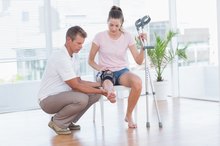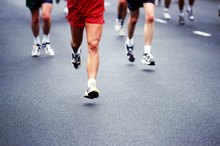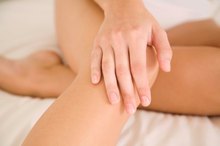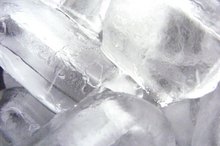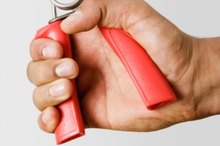3 Home Remedies for a Swelling Knee After Surgery
Swelling, also called edema, is one of the most common symptoms experienced after a knee surgery 3. While it can contribute to discomfort and pain, swelling can also lead to more serious issues if left unchecked. Swelling can limit mobility of the knee and cause the surrounding muscles to be ineffective. Thus, managing knee swelling is crucial to ensuring a successful knee surgery recovery.
If you are experiencing serious medical symptoms, seek emergency treatment immediately.
Read more: Foods That Help Healing After Knee Surgery
Icing and Compression
Icing the knee, also known as cold therapy or cryotherapy, can reduce swelling for the first few days during knee surgery recovery. This is typically done 10 to 20 minutes at a time, three to four times per day.
Your doctor might prescribe a cooling device that combines compression with cold application. However, you can also make your own ice pack using ice cubes at home. In addition to reducing swelling, ice also helps decrease pain after knee surgery. A study published in 2015 by Annals of Medicine & Surgery found that patients who used cold therapy after knee replacement surgery took less pain medication than patients who did not use cold 3.
Compression stockings or bandages may also be prescribed by your doctor to help limit swelling. Wrap a bandage from below the knee to above, overlapping approximately half the width with each layer. The bandage should be snug, but you should be able to fit a couple of fingertips between it and your skin. If your leg starts to go numb or tingle, loosen the bandage.
- Icing the knee, also known as cold therapy or cryotherapy, can reduce swelling for the first few days during knee surgery recovery.
Perform Therapeutic Exercise
How to Care for a Bruised Knee
Learn More
In addition to cold therapy and compression, initiating knee movement and activating the surrounding muscles also help to control swelling during knee surgery recovery. Exercise activities should only be performed as instructed by your surgeon or physical therapist to protect your repaired knee. Quad sets contract the large muscles in the front of your thigh to help increase circulation and reduce swelling.
HOW TO DO IT: Sit with your legs straight out in front of you or lie on your back. Place a small folded towel under your injured knee. Bend the opposite knee and place your foot on the floor. Tighten the muscles in your thigh by pressing the back of your knee into the towel. Hold for five to 10 seconds; then relax. Repeat 10 times.
Also effective are _heel slides,_ which help you bend and straighten your leg.
HOW TO DO IT: Loop a small towel under your lower thigh on the injured leg. Bend your knee slowly while sliding your heel along the floor. Use your arms to assist by pulling on the ends of the towel. Stop when your heel is close to your buttocks and hold for five to 10 seconds; then slowly straighten back out. Repeat this movement 10 times.
Read more: Post-Surgery Knee Exercises
- In addition to cold therapy and compression, initiating knee movement and activating the surrounding muscles also help to control swelling during knee surgery recovery.
- HOW TO DO IT: Loop a small towel under your lower thigh on the injured leg.
Warnings and Precautions
While swelling after knee surgery is common, it can also be a sign of a complication such as a blood clot or infection. Report any sudden increase in swelling to your doctor, especially if accompanied by worsening pain, increasing tenderness, redness, fever, pus or thick drainage from your incision.
Related Articles
References
- Annals of Medicine & Surgery: Is Cold Therapy Really Efficient After Knee Arthroplasty?
- Lespasio MJ, Piuzzi NS, Husni ME, Muschler GF, Guarino A, Mont MA. Knee Osteoarthritis: A Primer. Perm J. 2017;21:16-183. doi:10.7812/TPP/16-183
- Kiapour AM, Murray MM. Basic science of anterior cruciate ligament injury and repair. Bone Joint Res. 2014;3(2):20-31. doi:10.1302/2046-3758.32.2000241
- Doral MN, Bilge O, Huri G, Turhan E, Verdonk R. Modern treatment of meniscal tears. EFORT Open Rev. 2018;3(5):260-268. doi:10.1302/2058-5241.3.170067
- Reinking MF. CURRENT CONCEPTS IN THE TREATMENT OF PATELLAR TENDINOPATHY. Int J Sports Phys Ther. 2016;11(6):854-866.
- Petersen W, Rembitzki I, Liebau C. Patellofemoral pain in athletes. Open Access J Sports Med. 2017;8:143-154. doi:10.2147/OAJSM.S133406
- Frush TJ, Noyes FR. Baker's Cyst: Diagnostic and Surgical Considerations. Sports Health. 2015;7(4):359-65. doi:10.1177/1941738113520130
- Huang YC, Yeh WL. Endoscopic treatment of prepatellar bursitis. Int Orthop. 2011;35(3):355-8. doi:10.1007/s00264-010-1033-5
- Beals C, Flanigan D. A Review of Treatments for Iliotibial Band Syndrome in the Athletic Population. J Sports Med (Hindawi Publ Corp). 2013;2013:367169. doi:10.1155/2013/367169
- Tsai CH, Hsu CJ, Hung CH, Hsu HC. Primary traumatic patellar dislocation. J Orthop Surg Res. 2012;7:21. doi:10.1186/1749-799X-7-21
- Ragab G, Elshahaly M, Bardin T. Gout: An old disease in new perspective - A review. J Adv Res. 2017;8(5):495-511. doi:10.1016/j.jare.2017.04.008
- Lee PYF, Nixion A, Chandratreya A, Murray JM. Synovial Plica Syndrome of the Knee: A Commonly Overlooked Cause of Anterior Knee Pain. Surg J (N Y). 2017;3(1):e9-e16. doi:10.1055/s-0037-1598047
- Vaishya R, Azizi AT, Agarwal AK, Vijay V. Apophysitis of the Tibial Tuberosity (Osgood-Schlatter Disease): A Review. Cureus. 2016;8(9):e780. doi:10.7759/cureus.780
- Zanon G, Di vico G, Marullo M. Osteochondritis dissecans of the knee. Joints. 2014;2(1):29-36.
- Hindle P, Davidson E, Biant LC. Septic arthritis of the knee: the use and effect of antibiotics prior to diagnostic aspiration. Ann R Coll Surg Engl. 2012;94(5):351-5. doi:10.1308/003588412X13171221591015
- Gwinner C, Märdian S, Schwabe P, Schaser KD, Krapohl BD, Jung TM. Current concepts review: Fractures of the patella. GMS Interdiscip Plast Reconstr Surg DGPW. 2016;5:Doc01. doi:10.3205/iprs000080
- Voskuil R, Evenski AJ, Montgomery C, Emory CL. Malignant Bone Tumors of the Knee: How to Identify and Treat. J Knee Surg. 2019;32(4):305-314. doi:10.1055/s-0038-1675828
- Gupte C, St mart JP. The acute swollen knee: diagnosis and management. J R Soc Med. 2013;106(7):259-68. doi:10.1177/0141076813482831
- American Academy of Orthopedic Surgeons. Unstable Kneecap.
- Bhatia D, Bejarano T, Novo M. Current interventions in the management of knee osteoarthritis. Journal of Pharmacy & Bioallied Sciences 2013 Jan-Mar;5(1):30-38. doi:%2010.4103/0975-7406.106561
- Bronstein RD, Schaffer JC. Physical Examination of the Knee: Meniscus, Cartilage, and Patellofemoral Conditions. J Am Acad Orthop Surg. 2017 May;25(5):365-374.
- Browne K, Kurtz CA. How to perform a comprehensive examination of the knee. JAAPA. 2009 Jun;22(6):20-25.
- Hergenroeder AC, Harvey BS. (2017). Osteochondritis dissecans (OCD): Clinical manifestations and diagnosis. Bachur RG, ed. UpToDate. Waltham, MA: UpToDate Inc.
Writer Bio
Tim Petrie is a Physical Therapist and an Orthopedic Certified Specialist working in Milwaukee, Wisc. When he isn't working, he loves distance running, Packers football, and traveling with his wife and his energetic kids.
